Duke Kahanamoku. The Duke is an icon and legend who is widely credited with introducing surfing to the world. In 1912 after his triumph at the Olympic games in Stockholm, where he won gold and silver medals in swimming, he returned to the US- specifically Atlantic City, New Jersey- where he gave a surfing exhibition that introduced surfing to America.
Except that is not quite true. While the Duke most certainly popularized surfing in the media and was rightfully surfing’s greatest ambassador- recent discoveries in the last few years has shown that surfing was an activity that was being practiced in the US long before the Duke visited Atlantic City. Surfing historians like Skip Funderburg, out of North Carolina, have found evidence of surfing in Wrightsville NC as early at 1907. http://www.carolinabeach.net/surfing_history_changed.html
There is also evidence of Hawaiian princes surfing Santa Cruz California in 1885, though that seems to have been a one-time occurrence.
Resources are now available online that gives access to thousands of newspapers going back over one hundred years that can be quickly searched for any topic, which brings us to the question- how early was surfing known in Florida? The answer is- surprisingly early. Newspapers can be a valuable resource for pinpointing exactly when in history certain events occurred. Just like social media today they were concerned with getting up to the minute content on the news of the day. So, an article in a newspaper will include the date of publication- giving a pretty precise time something of importance occurred. This clipping from The Daytona Gazette- August 28th, 1909 is the earliest known mention of surfing in Florida:

The article in Collier’s Weekly that gave Mr. Johnson the surf stoke was published in 1909 by Alexander Hume Ford, a South Carolina native who, after visiting Hawaii in 1899, became an enthusiastic promoter of surfing. He discovered a young Duke Kahanamoku and made him famous and also founded the Outrigger Canoe Club, the world’s first surf club.
The next clipping is remarkable in that it is the only early description that I know of that describes the actual dimensions and construction of a surfboard. Appearing in 1915 in the St Augustine Evening Record, it describes exactly the type of surfboards that were commonly ridden in Waikiki before the influence of the Duke and Tom Blake made the huge Olo style of board popular. And these dimensions are the same as surfboards of the era made for riding while standing up, unlike the smaller prone surfing paipo boards. This challenges the notion that the Whitman brothers of Miami Beach were the first to introduce stand up surfing in the early 30s. (mahalo to Magen Wilson, Executive director, St Augustine Historical Society for this amazing find!).

Mr. Floyd must have been one of a number of others who were getting their stoke on. If there was a mention in a newspaper about some new craze like surf riding then there had to have been others that were enjoying riding the waves as well. How many surfers were riding the waves in Florida by then, was it a dozen or fifty? We will probably never know but articles continue to appear regularly, if not frequently in the following years, about early Florida surf riders suggesting that a surf culture was already developing in the Sunshine State. By 1922 there were not only surfboard manufacturers on the East Coast- they were also looking at lighter weight (higher performance) materials for their products.

Surfing was appearing on the barrier islands in the Pensacola area as well. This clipping from 1927 tells of surfing activities in Foley, Alabama, just across the state line. There are a lot of interesting inferences in this little article. Hundreds of cars on the beach is proof that crowded beaches are nothing new. And the line “large numbers took advantage of the surf which is particularly fine” sounds an awful lot like “surf’s up!” Mr and Mrs. Martin appear to have been early hard core surfers living the beach life. It would certainly be interesting to find a copy of the book that Mr. Martin penned.

Pensacola News_Journal_Sun__Apr_17__1927
By the early 1930s the Whitman brothers of Miami Beach, Bill, Dudley and Stanley, had constructed their first hollow Blake surfboards, made the pilgrimage to Waikiki and befriended Tom Blake himself. Blake soon moved to Miami Beach, surfing with the Whitman’s, earning a living as a lifeguard and promoting his invention as a lifesaving device. Whitman family history

The_Miami_News_Sun__Nov_11__1934
This excerpt from the Cocoa Tribune, February 2nd 1937, indicates that surfing was becoming a popular pastime in Cocoa Beach-
Homer A Rodeheaver was again a guest at Ocean Lodge, Cocoa Beach, Monday night. Mr. Rodeheaver recently became interested in some oceanfront property at Cocoa Beach. On his trip he was enthusiastic over the possibilities of using surfboards in the surf. He expressed the belief that the beach here was equal to that at Waikiki Beach , in Hawaii, for this attractive sport, and left orders for the construction of a board for his own use.
Finally, all the excitement about wave pools that Kelly Slater’s Wave Ranch has generated is nothing new.

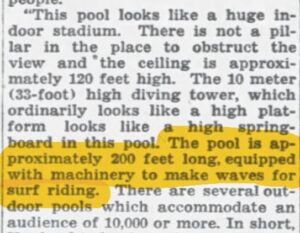
Florida has a rich surfing history going back more than one hundred years. Researching newspapers is just one way of discovering our heritage. Photographs, oral histories, artifacts, memorabilia and online commentary all are pieces of the puzzle that enrich our story. If you would like to add to the story feel free to contact us at fl**********@***il.com





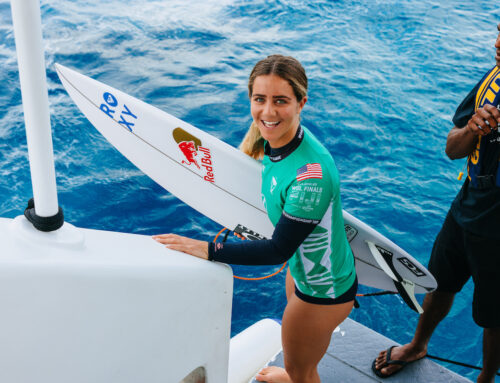
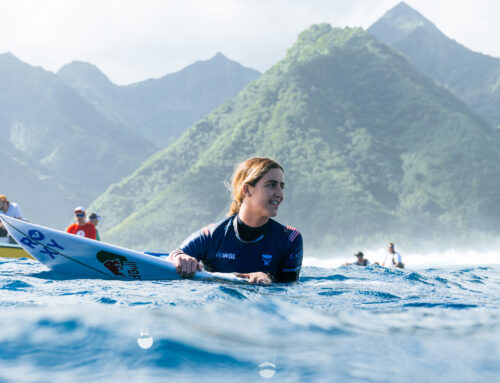
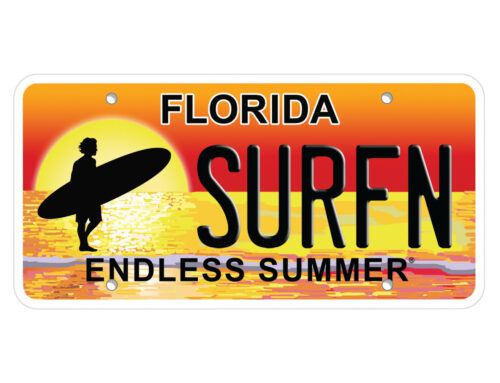
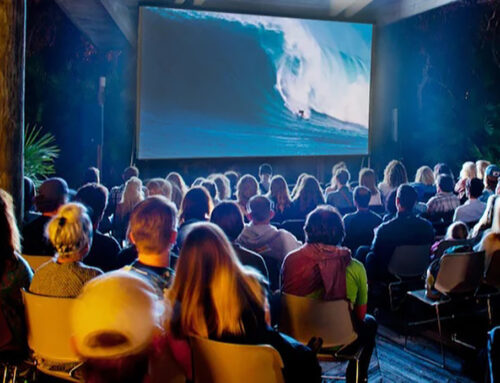






Leave A Comment